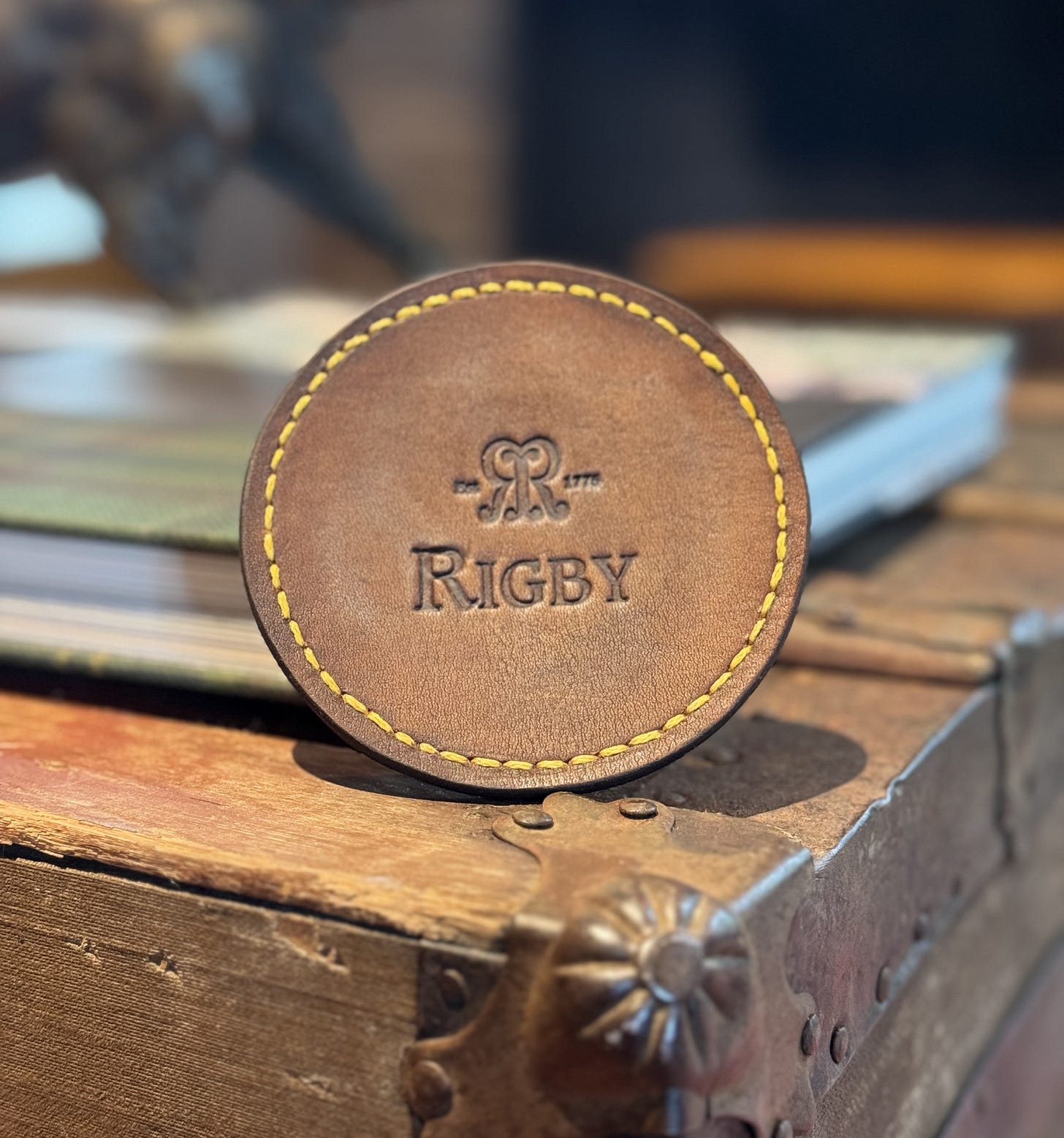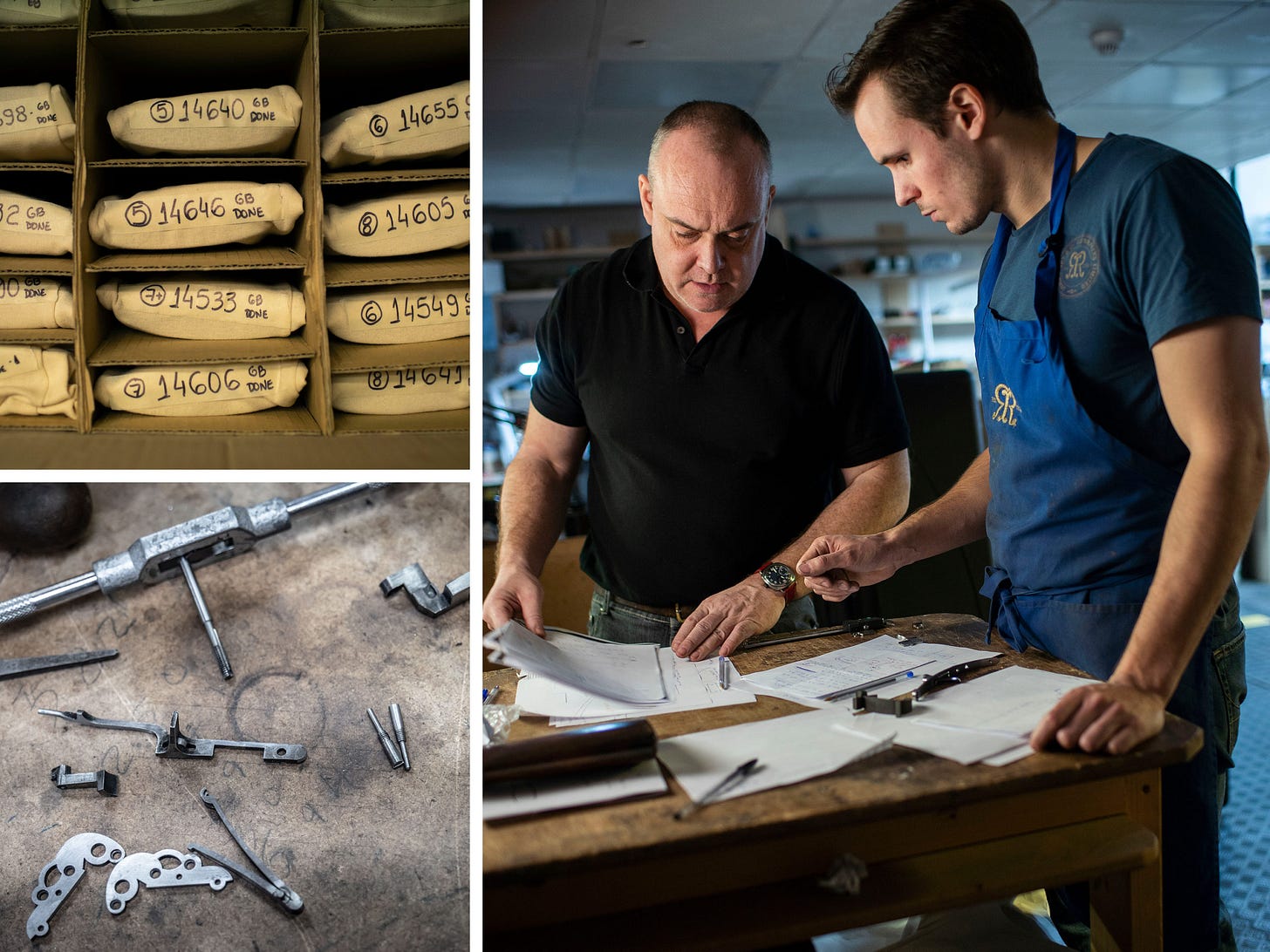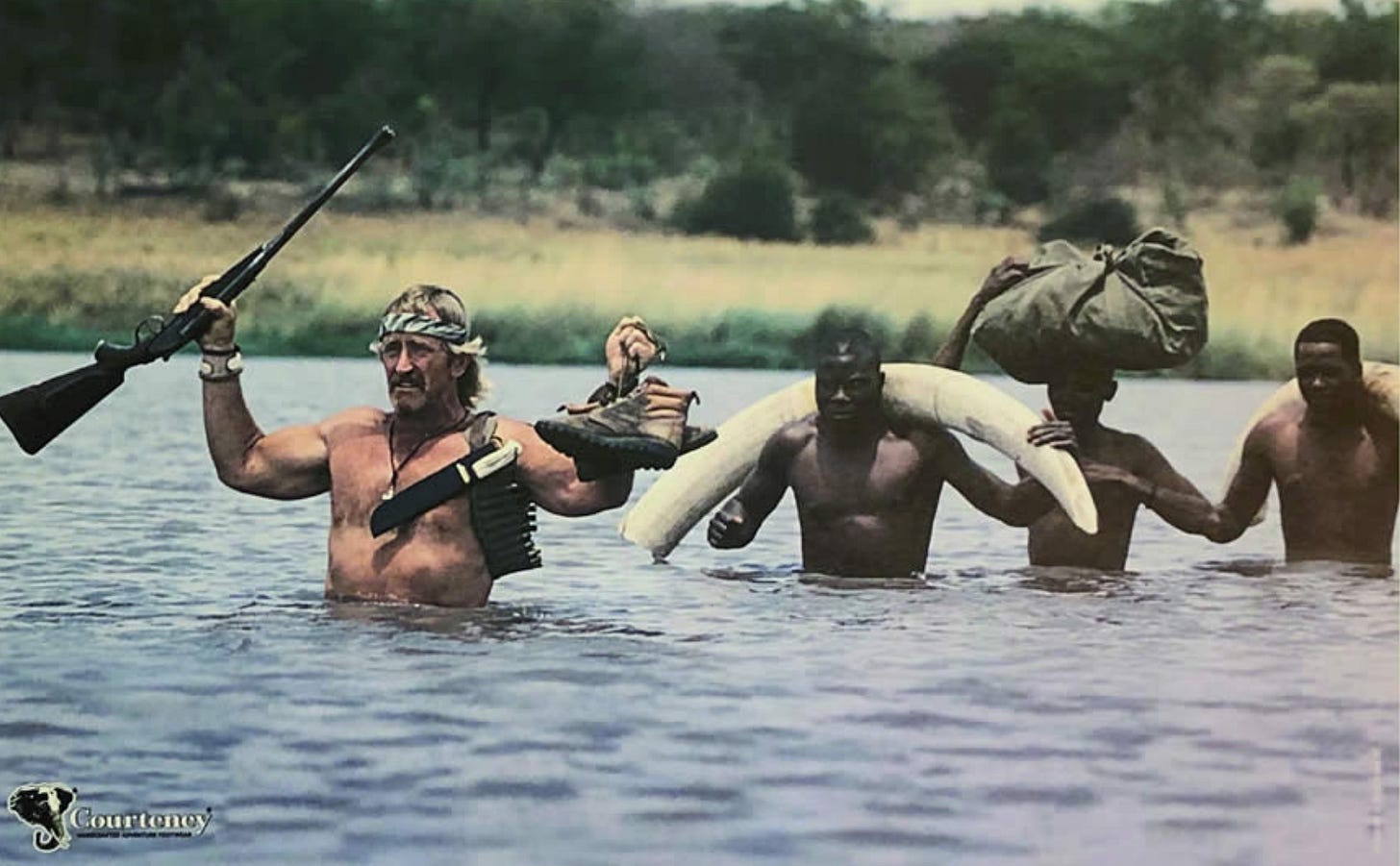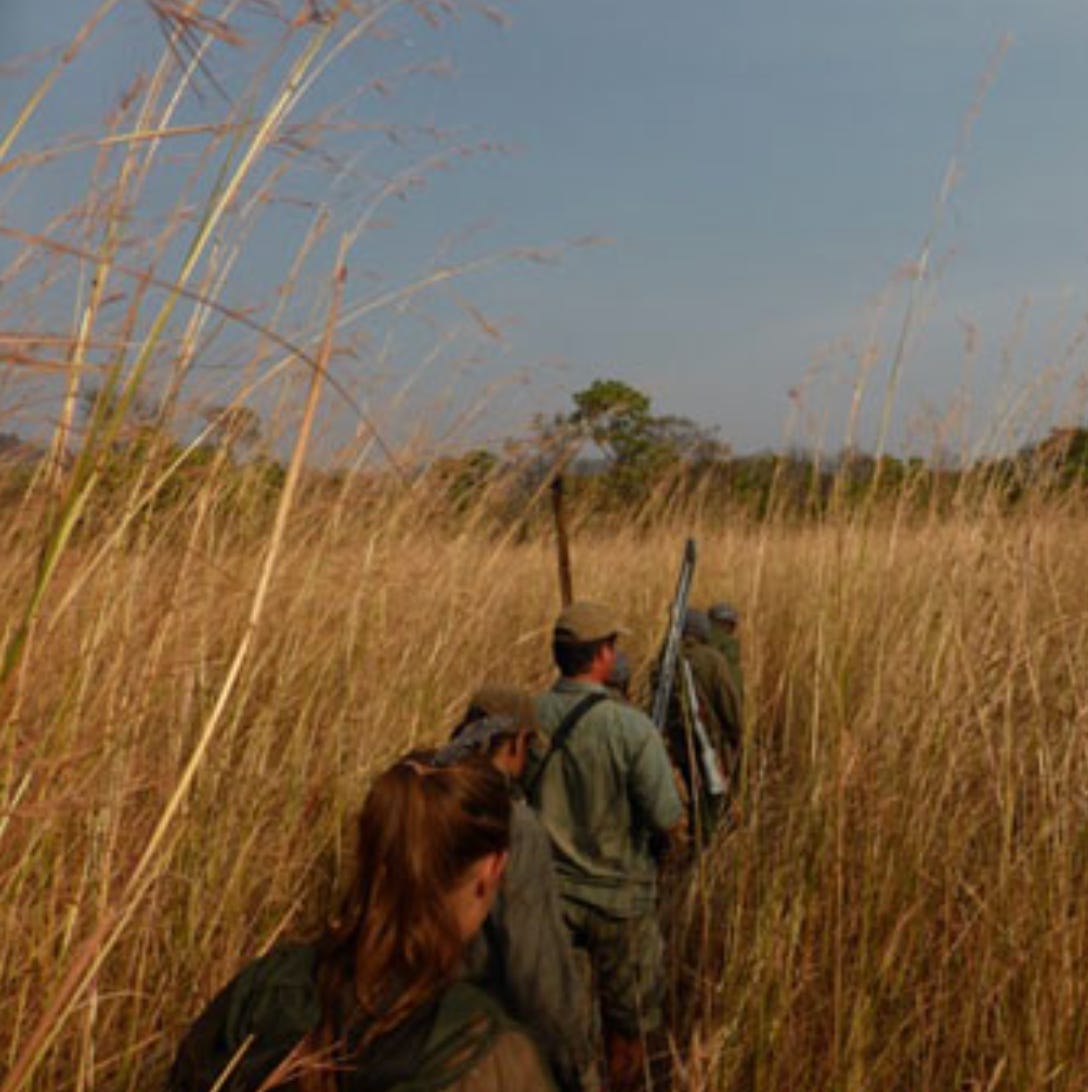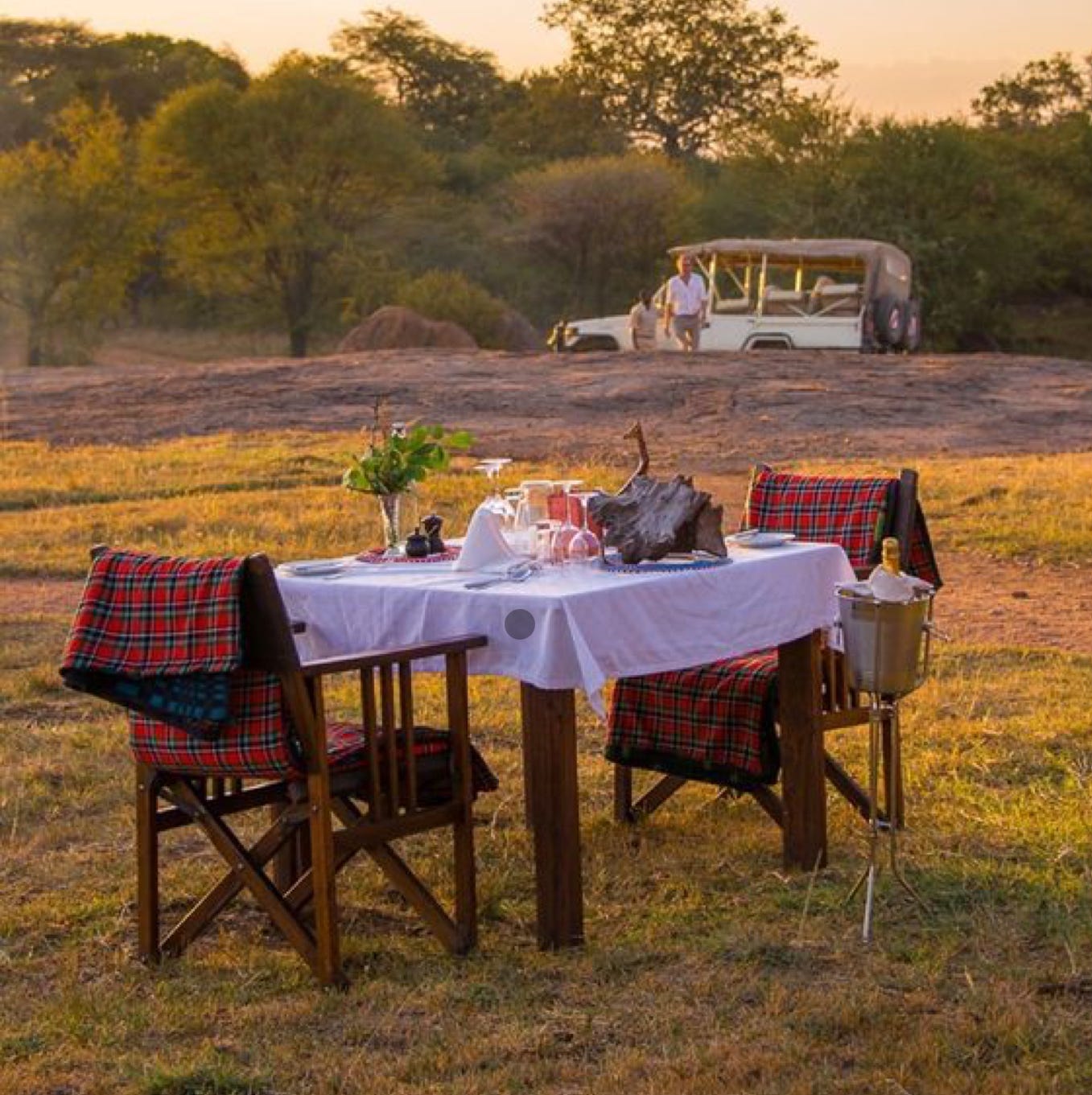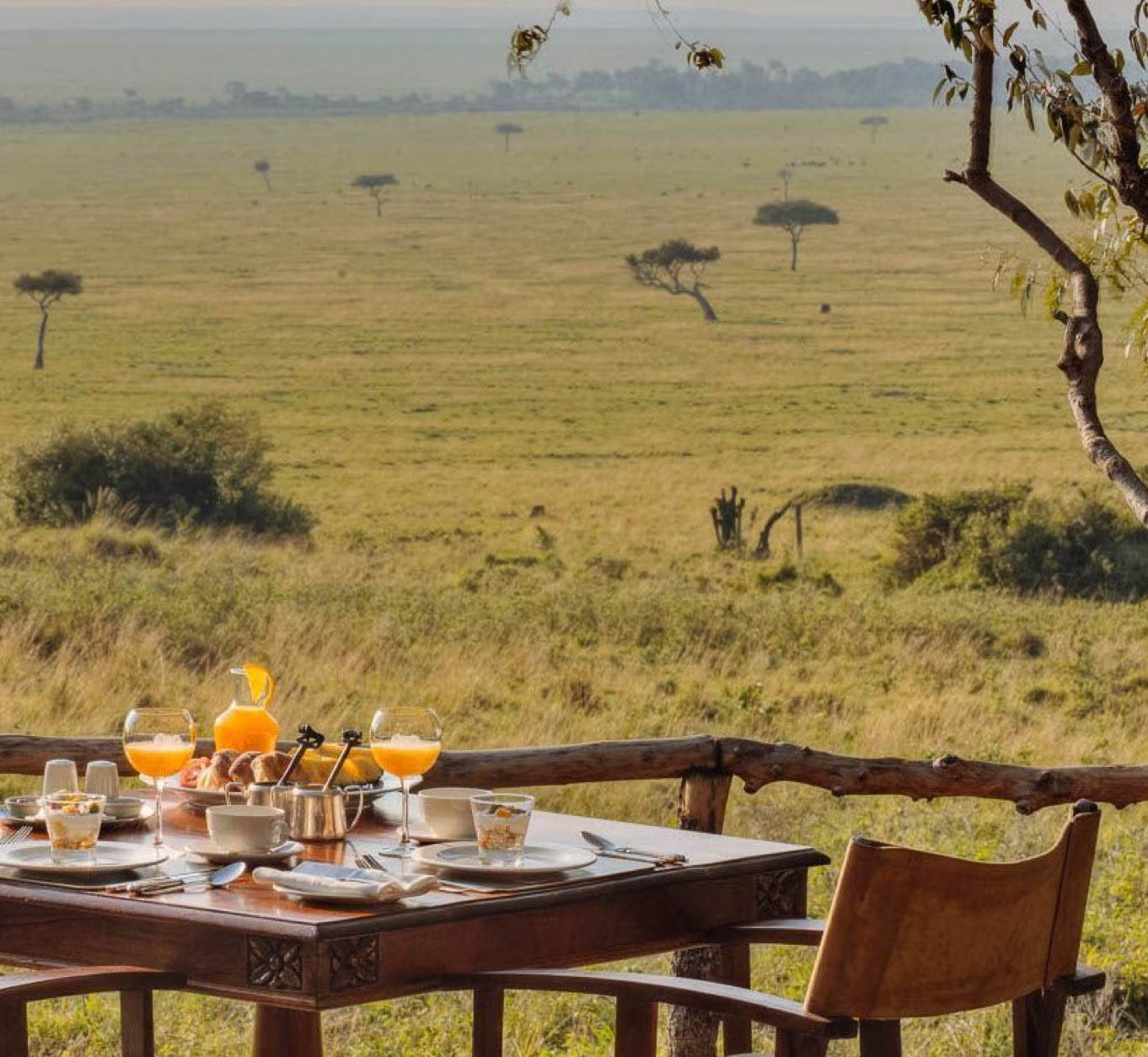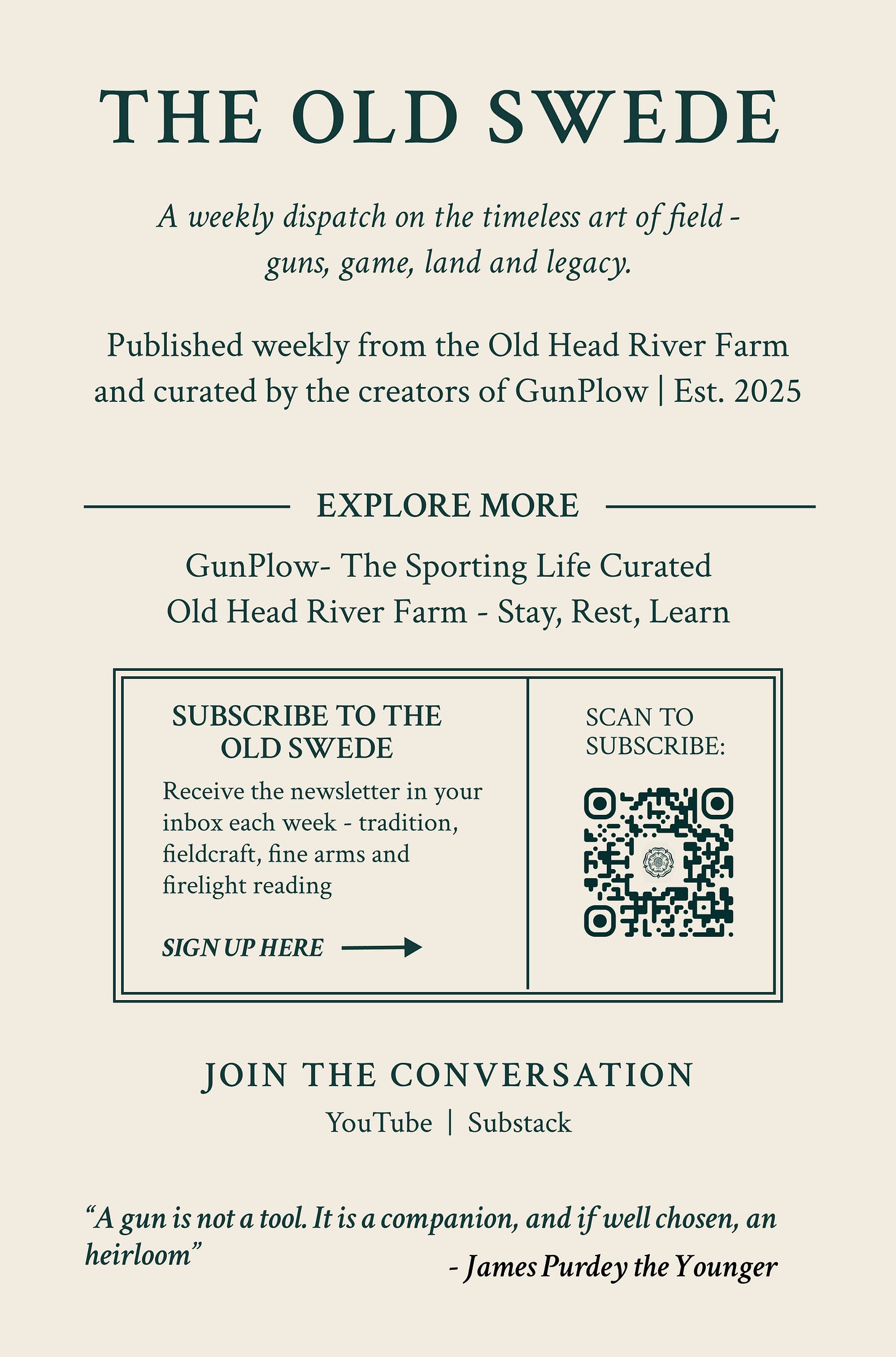The Old Swede: August 18, 2025
The Guns and The Ground: From London’s bench to Africa’s long grass.
Featured Gunmaker
John Rigby & Co. — 250 Years of Legacy
Founded in Dublin in 1775 and moving to London in 1866, John Rigby & Co. stands as the oldest gunmaker in continuous operation in the English-speaking world. In 2025, Rigby celebrates its 250th anniversary, a milestone that not only honors its heritage but reaffirms its place at the heart of sporting history.
From its famed .275 Rigby (the Mauser 7x57) that became synonymous with African safaris, to the .416 Rigby immortalized by professional hunters and writers alike, Rigby has long been the maker of choice for men who lived — and often wrote — at the edge of wilderness.
Today, under Marc Newton’s stewardship, Rigby remains a thriving London workshop, producing exquisite Highland Stalker rifles, rising-bite double rifles, and bespoke bolt-actions built on Mauser actions. Each gun carries the same spirit of reliability that once armed Jim Corbett in India and Harry Selby in Africa.
The anniversary is more than a number — it is a testament to Rigby’s unbroken chain of craftsmanship and its enduring reputation as a gunmaker for explorers, hunters, and gentlemen who demand both artistry and rugged dependability.
Explore Rigby’s 250th Anniversary
Shooting School
Rigby Academy
In parallel with its 250th anniversary, The Rigby Academy continues the company’s commitment to nurturing new talent in the ancient craft of gunmaking. Apprentices are handpicked and taught the traditional methods — filing, engraving, stock shaping, and barrel regulation — skills that remain largely unchanged since Rigby’s founding.
Beyond technical work, the Academy instills philosophy: respect for the customer, reverence for the rifle, and the understanding that each Rigby gun is a legacy piece destined for the field. Young gunmakers are trained not to mass-produce but to perfect, ensuring each rifle leaves the bench with a soul.
It’s not only about the workshop either. Academy graduates understand how a double rifle balances on a buffalo charge or how a bolt-action carries across a mountain stalk. In teaching both artistry and application, Rigby guarantees its next 250 years are as strong as the last.
Estate Visit
On Location in the Wilds of Africa
While Rigby was born in Britain, its soul was forged under the African sun. Today, its rifles remain the tool of choice in camps from the Selous to the Zambezi. A Rigby .416 across the back of a hunter feels natural and a sense of calm.
A safari in Tanzania’s Rungwa Reserve highlights the timelessness of the experience. Buffalos are moved like black rivers through the long grass, lions called at night from the acacia thickets, and the rifles that once armed Selous himself are still at home in the same wilderness.
Whether on a plains game stalk or facing down dangerous game, Rigby’s rifles connect the hunter to a lineage that stretches from Victorian explorers to today’s professional hunters. Each safari is not just a hunt, but a continuation of the Rigby story written across continents.
Fieldcraft Highlight
The Role of the PH (Professional Hunter)
In the African bush, no figure is more important than the Professional Hunter (PH). Equal parts guide, game warden, tracker, and teacher, the PH is responsible for the safety, success, and spirit of every safari.
A PH reads spoor like a book, senses wind and birdcall as signals, and anticipates game movement with uncanny precision. But perhaps his greatest role is leadership under pressure. When facing a wounded buffalo, an elephant in musth, or a lion on the charge, the PH is the calm hand that steadies both client and rifle.
Etiquette is just as vital as skill. A proper PH balances hospitality and authority, reminding the client when to shoot — or when not to. They embody conservation, ensuring sustainable harvests and respect for both land and wildlife.
Without the PH, safari would be reckless. With him, it becomes the ultimate classroom in humility, courage, and fieldcraft.
Shoot Lunch & Wine Pairing
In the Safari Camp
Lunch in a classic Africa safari camp is a ritual of its own. Taken under canvas awnings or a shady marula tree, it blends frontier simplicity with colonial echoes of style.
A typical spread might begin with chilled cucumber soup or smoked Nile perch, followed by grilled kudu backstrap or guinea fowl curry with chapati. Side dishes often feature maize meal, spiced pumpkin, or fire-charred okra. Dessert is as simple as mango with lime or bananas flambé.
For wine, safari tradition favors robustness and travel durability. A 2018 Kanonkop Pinotage from Stellenbosch offers dark fruit, smoke, and earthy tannins — pairing beautifully with venison and the dust of the savannah. Lunch closes with coffee brewed over coals and perhaps a splash of Amarula cream liqueur.
It is never excessive — but always memorable. In the stillness of midday, as flies buzz and trackers rest, one realizes that lunch in camp is as integral to safari as the morning stalk.
Quote from the GunPlow Library
“Death on the African veldt is never far away. The long grass hides many things: the horn of a buffalo, the coil of a python, the yellow eyes of a lion. But it is not death that lures us back — it is the knowledge that here, life is lived raw, dangerous, and without apology.”
— Death in the Long Grass by Peter Hathaway Capstick
GunPlow Classic Library Coming Soon



